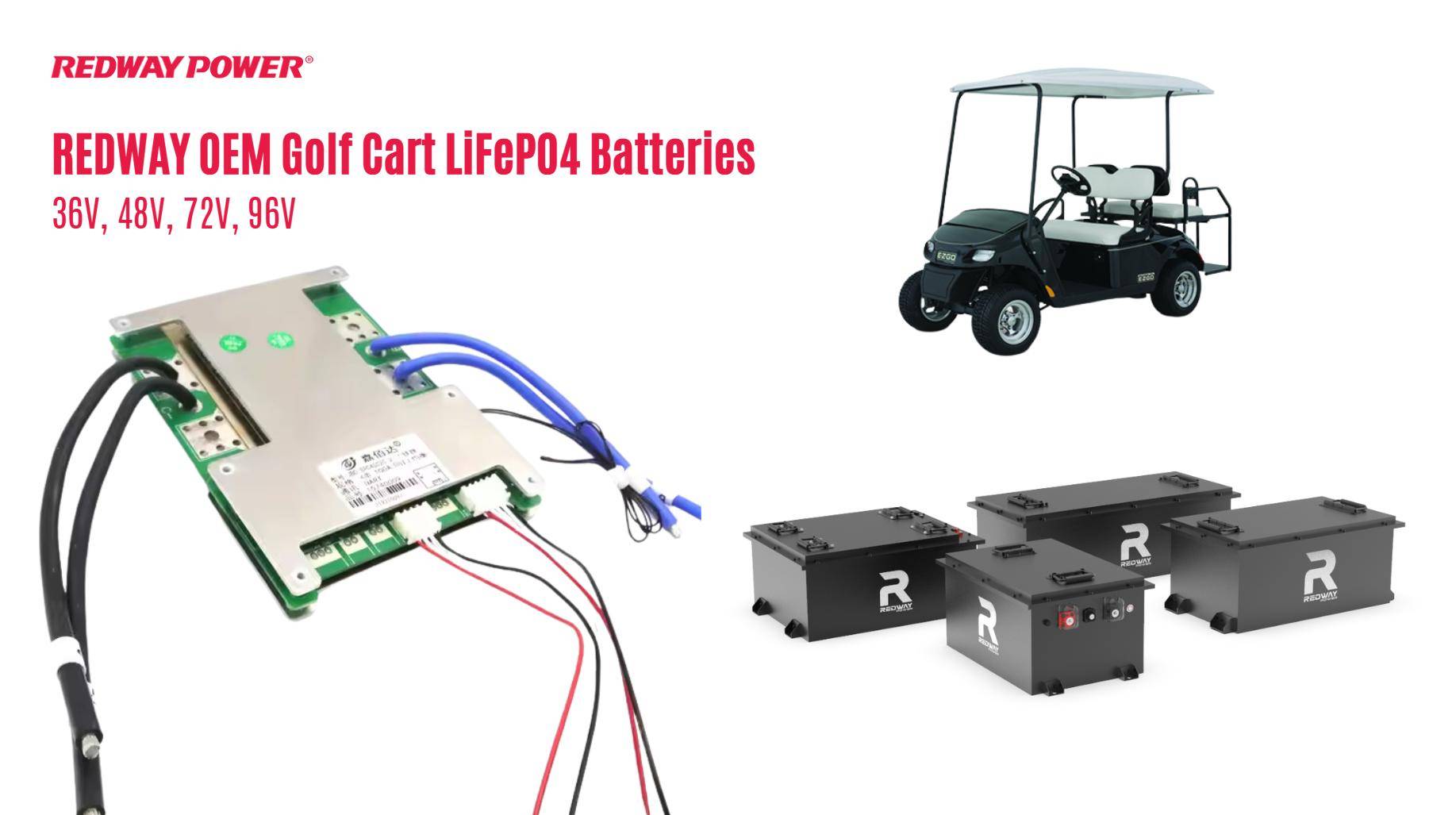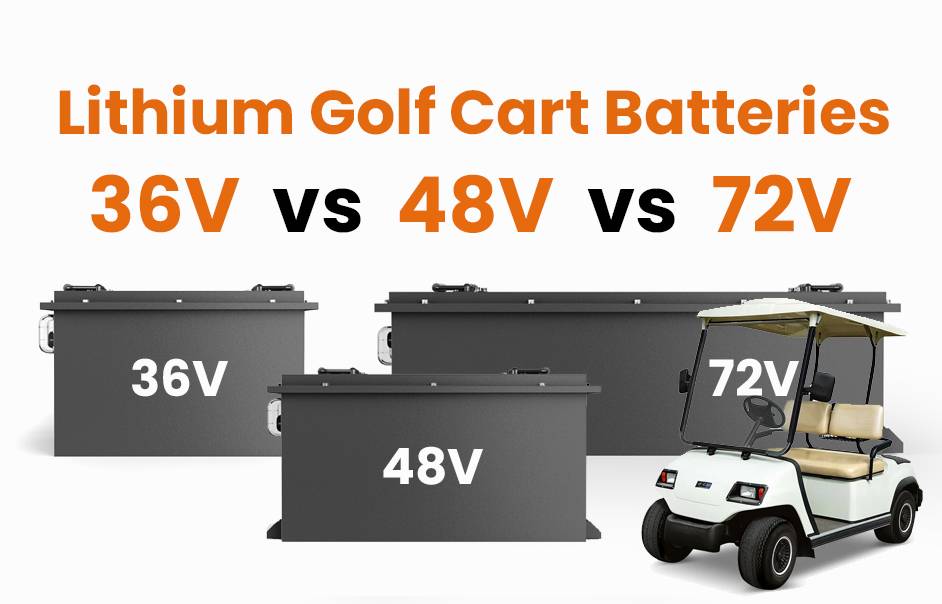
Blog
What Defines an Integrated Battery System for Golf Carts?

An integrated battery system for golf carts combines batteries, a Battery Management System (BMS), and charging infrastructure to optimize performance, longevity, and safety. Lithium-ion batteries are increasingly favored over lead-acid due to higher energy density, faster charging, and longer lifespan. The BMS monitors voltage, temperature, and current, ensuring efficient operation and preventing overcharging or overheating.
How Do Lead-Acid and Lithium Batteries Compare for Golf Carts?
Lead-acid batteries are cheaper upfront but heavier, slower to charge, and last 4-6 years. Lithium batteries cost 2-3x more initially but offer 8-10+ years of service, 50% less weight, and 30% faster charging. Lithium’s deeper discharge capability (80-90% vs. 50% for lead-acid) provides more usable energy per cycle, making them ideal for frequent or long-distance golfers.
The total cost of ownership further highlights lithium’s advantages. Over a 10-year period, lithium systems typically cost 40% less when factoring in replacement cycles and maintenance. For example, a 48V lead-acid system requiring 8 batteries at $150 each would need two replacements ($2,400 total), while a lithium pack at $2,500 lasts the full decade. Golf courses report 18% energy savings from reduced charging times and 23% fewer battery-related service calls after switching to lithium. New hybrid systems now combine lithium and supercapacitors, offering 15-second quick-charge bursts for hill climbs while maintaining thermal stability.
| Feature | Lead-Acid | Lithium |
|---|---|---|
| Cycle Life | 1,200 cycles | 3,000-5,000 cycles |
| Charge Time | 8-10 hours | 5-7 hours |
| Weight (48V system) | 580 lbs | 290 lbs |
Why Is a BMS Critical in Golf Cart Battery Systems?
A BMS ensures balanced charging across battery cells, prevents overvoltage/undervoltage scenarios, and monitors temperature fluctuations. It extends battery lifespan by 20-40% by avoiding stress conditions. For example, a BMS in lithium systems disconnects power if temperatures exceed 140°F, mitigating fire risks. It also provides real-time diagnostics, alerting users to performance issues before failures occur.
Advanced BMS units now incorporate machine learning algorithms that adapt to user driving patterns. These systems optimize charge cycles based on terrain usage—courses with steep hills see 12% longer battery life through adaptive discharge limits. The latest BMS models feature wireless connectivity, sending push notifications when cells deviate by more than 0.2V. During cold weather, some systems activate self-heating functions, maintaining optimal electrolyte viscosity in lithium batteries. This technology prevents capacity loss below freezing, ensuring consistent torque delivery during winter rounds.
What Are the Best Charging Practices for Golf Cart Batteries?
Charge lithium batteries after 20-30% discharge; avoid full depletion. Use a smart charger compatible with the BMS to enable temperature-compensated voltage regulation. For lead-acid, recharge immediately after 50% discharge to prevent sulfation. Store carts at 50-70% charge in dry, 50-80°F environments. Overcharging lithium beyond 4.2V/cell or lead-acid beyond 2.45V/cell accelerates degradation by up to 60%.
How Does Temperature Affect Golf Cart Battery Performance?
Lithium batteries operate optimally at 32-113°F but lose 15-20% capacity below freezing. Lead-acid efficiency drops 30% at 32°F. High heat (above 95°F) increases lead-acid water loss by 40% and lithium degradation rates 4x. Insulated battery compartments and preheating systems (for lithium) mitigate cold issues. Avoid direct sunlight storage—130°F ambient temps can halve battery lifespans.
| Temperature | Lithium Efficiency | Lead-Acid Efficiency |
|---|---|---|
| 32°F | 85% | 70% |
| 77°F | 100% | 100% |
| 95°F | 92% | 88% |
What Are the Environmental Impacts of Golf Cart Batteries?
Lead-acid batteries contain 60-80% recycled lead but leak sulfuric acid if improperly disposed. Lithium batteries have 95% recyclability for cobalt/nickel, but only 5% are currently recycled globally. A 48V lithium golf cart battery produces 75% less CO2 over its lifespan vs. lead-acid when charged via solar. Proper recycling prevents 500+ kg of toxic waste per cart annually.
Expert Views
“Modern BMS technology has revolutionized golf cart reliability. We’re now integrating AI-driven predictive analytics that forecast battery failures 30 days in advance with 92% accuracy. The next leap will be solid-state batteries—prototypes show 50% more range and 15-minute full charges, but commercialization remains 3-5 years out.” – Industry Expert, EV Power Solutions
Conclusion
Integrated battery systems are the cornerstone of modern golf cart performance. By selecting lithium batteries with advanced BMS controls, users gain durability, efficiency, and eco-friendly operation unmatched by legacy lead-acid systems. As recycling infrastructure and solid-state tech evolve, these systems will push golf carts into new realms of sustainability and power.
FAQs
- How long do lithium golf cart batteries last?
- Properly maintained lithium batteries last 3,000-5,000 cycles (8-10+ years), outperforming lead-acid’s 1,200 cycles. Depth of discharge and BMS quality are key factors.
- Can I retrofit old golf carts with lithium batteries?
- Yes, but requires a compatible BMS, upgraded charger (48V/72V), and often new wiring harnesses. Retrofits cost $1,500-$3,000 but yield 5+ years of ROI through reduced maintenance.
- Are golf cart batteries waterproof?
- Most have IP65 ratings—protected from dust and low-pressure water jets. Submersion beyond 3 ft for 30+ minutes risks BMS damage. Use marine-grade systems for water-heavy courses.
Know more:
What Are OEM LiFePO4 Golf Cart Battery Solutions?
What Defines an Integrated Battery System for Golf Carts?
Are LiFePO4 Batteries Compatible With All Golf Cart Models?
How Can Smart Charging Prolong LiFePO4 Golf Cart Battery Lifespan?
Is Retrofitting Golf Carts with LiFePO4 Batteries Worth the Cost?
How to Install and Maintain LiFePO4 Batteries in Golf Carts?




